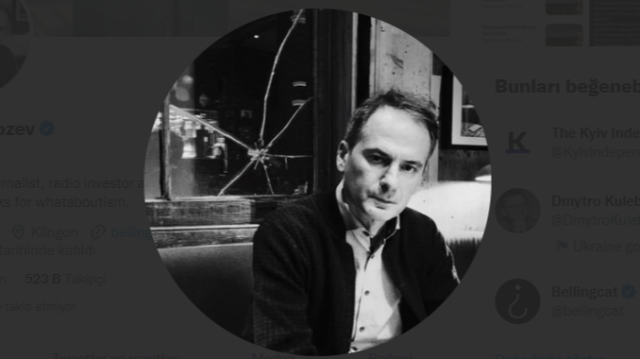The international community, in seeking to pursue cooperation in the region, ought to look to Muslim women as a vital set of partners.
By Aksana Ismailbekova
December 30, 2022

In Kyrgyzstan, Islamic organizations and activism — particularly those run by women — have become increasingly important in the social sphere. The influence of Muslim women, and the organizations and communities they lead, can be seen in areas as diverse as charity and fashion. Yet the role of Islamic organizations as social actors is little understood outside of Muslim contexts.
Islam in Central Asia is often viewed through a narrow range of lenses. First, Islam and Islamic groups, organizations and parties have been studied and presented from a security perspective, most often as threats. There is a general perception among policymakers, the diplomatic community, and the public, that Islamization and Islamism are dangerous and a threat to stability in the region. This has been the dominating feature of the international community’s understanding of Islam in Central Asia.
A second perspective that has emerged over the last decade perceives Islam as a challenge to liberal ideology (including freedom of opinion, freedom of expression, women’s rights, and individual life choices). And a third perspective is that in Central Asia, Muslim activity has become an important element of identity politics.
Identity politics have certainly evolved after the collapse of the Soviet Union and the downfall of communism. During the communist period, a lot of social activities were organized in women’s groups (zhensovet), local groups (Komsomol), and among youth pioneers. Muslim mobilization has taken the place of those Soviet-era modes of organizing, providing ways for individuals to redefine or reinforce their own political identities.
There is another way to view Islam and Islamic activism in Central Asia, Kyrgyzstan in particular. Islam and Muslim organizations operate also as social actors and have social agency, especially women. Muslim women’s networks/associations are a fundamental part of wider civil society in Kyrgyzstan and it’s valuable to explore the ways Muslim women have shaped society in the country via Islam. The international community, in seeking to pursue cooperation in the region, ought to look to Muslim women — the groups and communities they organize with which they share common values — as a vital set of partners.
Recent research has shown that Islamism and Islamic activism are increasingly important in welfare activities, especially in providing public goods and services not delivered by the state. Islamic activism and Islamic institutions are gradually growing into social institutions and have partially gained their own voice and established their own systems to contribute to society. Moreover, religious activists are predominately active in human rights and social issues in their communities, highlighting gender equality, health care disparities, gender-based violence, as well as issues related to women’s rights, the elderly, people with disabilities, and children.
In the Kyrgyz context, religiously educated activists and female madrassa/university graduates contribute to challenging the patriarchy by using their high authority when it comes to religious knowledge. Invoking their certified knowledge of Islam, they emphasize women’s status and the protection of their rights in Islam and contribute to changing the nature of the traditional family. For example, one of the leaders of the Muslim organization Mutakallim, Jamal Frontbek kyzy, is against polygamous marriage in Kyrgyzstan, arguing that the way it is practiced in Kyrgyzstan does not meet the requirements of Islam.
In matters of charity and social support, women and Islamic organizations have taken a lead. This was especially evident during the COVID-19 pandemic. For example, mosques were among the first to open their doors to the sick, and women participated in volunteer work and generated funds to buy medical equipment. In other spheres, Muslim organizations have also supported women: Datka-aiym has initiatives related to business development supporting single or widowed women in finding jobs. They also draw attention to the rights of children with disabilities in the regions and beyond by involving them in sports, art or music competitions. Datka-aiym defends the rights of marginalized communities that the state cannot provide welfare for. They provide scholarships to orphans and children with disabilities on a charitable basis. They want to draw attention to violence against children with disabilities and domestic violence against children. They also make the voices of children with disabilities heard and talk about all the difficulties their parents face.
Female religious leaders additionally serve as social mediators. The Islamic organization Mutakallim serves as a bridge between secular and religious communities, mediating between a secular community perceived as not accepting the religious community and a religious community which at times brands the secular community as “unbelievers.” Mutakallim stresses the importance of living in a secular country and respecting peoples’ different choices, emphasizing all people should be respected and tolerated regardless of their individual choices. This organization has introduced peacebuilding courses in madrassas and religious institutions, explaining that it is important to respect and tolerate other religious groups. For example, female religious leader and activist Jamal Frontbek kyzy was one of those who first introduced the practice of allowing girls to go to school in headscarves and made sure women were permitted to have their passport photo taken in headscarves. Jamal Frontbek kyzy says that according to the Kyrgyz Constitution, every girl should attend school — and for the religious wearing a headscarf is a necessary accommodation. Her organization is quite active in protecting the rights of Muslim women, working closely with international organizations and government agencies.
One member of Mutakalim says, “We work on issues related to women’s rights. Usually, it is thought that women don’t have any rights and don’t go beyond the household. However, in Islam this is not the case, we try to protect women’s rights, raise issues such as domestic violence against women, gender inequality. Even though the mullahs don’t like these gender-related questions, we still continue to raise these issues in public. We are also trying to convince Muftiate to have a women’s consulate or department, and to have women on a decision-making level committee in the Muslim advisory council. There is still a problem that the religious community does not accept these kinds of behaviors, but we hope that will change soon.”
Many of my interlocutors expressed their willingness to show Islam in a positive light and to present an alternative vision of Islam (progressive, modern, stylish, humanitarian) to the younger generation. Women see their role as crucial in this regard. They expressed that it was time to portray Islam positively in order to change the stereotypes of Islam being “backward,” “radical,” or “foreign.” In this context, clothing has been a main topic of discussion, especially among young women. The issue of clothing was mentioned by several highly educated pious women. They are involved in sports and education, and see their activism as belonging to fashion and clothing design. They say that it is important to make Islamic clothing diverse, colorful, interesting, and stylish to show the diversity of Islam. For example, when I met Ainura, she came all in red, including her headscarf and long dress. She is a businesswoman who runs several stores and is active in sports. She says she wants to show that women who practice Islam can and should be seen in business, sports and education.
A teacher at the Islamic University, Baktygul, studies the Arabic language dialects in different countries alongside the logic of these dialects and the meaning behind them. When I met her, she was wearing a beautiful white scarf with elegant white clothes with black stripes. She teaches Arabic to thousands of students over the internet, especially school children in different parts of Kyrgyzstan. She is a very positive young woman and aims to make Islam interesting for young people. She has many female followers and wants to be a role model for her students. Consequently, she says that she should be stylish, interesting, and well-educated. Her embodiment of Islam in a positive, stylish, and educated way attracts many young students. She is fluent in Kyrgyz, Russian and Arabic.
Another woman, Damira, takes online courses on the Quran and Islam with a young teacher from the Islamic University in Kyrgyzstan. Being at home with four children, this was the best way for her to continue her religious education. Damira fasts strictly every year and prays five times a day.
These women have chosen quiet activism — working to learn Islam and positively influence others in their social circles — rather than open protest. They talk with their relatives about Islam and highlight the humanitarian aspect of it as well as that which promotes respecting elders. The stories of these women show that their activities are focused on bringing progressiveness, style, sport and education to the forefront of Islam. All of them are very interesting and knowledgeable in the fields of economics, sport, politics and education. Their mission and activities are to present Islam in a positive light.
And yet, these women do face negative attitudes toward them.
One of the key observations made during the focus group concerned the evident intergenerational conflict regarding the private and public practice of Islam in Kyrgyzstan. The focus group included both veiled and unveiled young women. The parents of young women with veils supported their decision mainly because their parents practiced Islam with their children. Those young women who were not veiled, but expressed a willingness for veiling, shared their personal stories. Young students expressed a willingness to embrace Islam, but said their parents often opposed their attempts, mostly saying that they should wait a little longer.
Among young girls discussion mostly concerned the veil and their style of dress, which secular parents often did not support, saying it looked uncomfortable. Mothers told their daughters that their Islamic clothes were not comfortable and were too long, especially when they enter marshrutkas (the minibus taxis ubiquitous across Central Asia). Such long clothes would always remain dirty, they argued, dragging on the ground. Mothers also told their daughters that their style of dress was not good, so they did not approve of it for their daughters. However, parents would rarely give reasons beyond practicality to oppose Islamic dress.
The intergenerational problem regarding whether or not to practice Islam was not limited to the home or the domestic sphere. One could also see this problem in the public sphere, especially in the fact that public school administrations discouraged young teachers from adopting religious dress. All participants said that their school administration was a major problem for those who practiced Islam and did everything they could to protest Islam. Some teachers, for example, forced their students to remove headscarves when they were in school. Some school administrators were particularly hard on young teachers who practiced Islam, again, with much of the conflict centered on headscarves and veils. Almost all of the young teachers in the group talked about problems in school.
Female Islamic activists in Kyrgyzstan are involved in various activities from charity, to fashion, to development assistance, to online and offline education and other forms of social support. There may be other cultural, social, and political factors behind the strength of female-led activism in Kyrgyzstan more generally, but Islam is clearly a crucial element within broader civil society in the country and a necessary aspect of future cooperation across issue areas.
GUEST AUTHOR
Aksana Ismailbekova is research fellow at Leibniz- Zentrum Moderner Orient (ZMO), Berlin, Germany.










